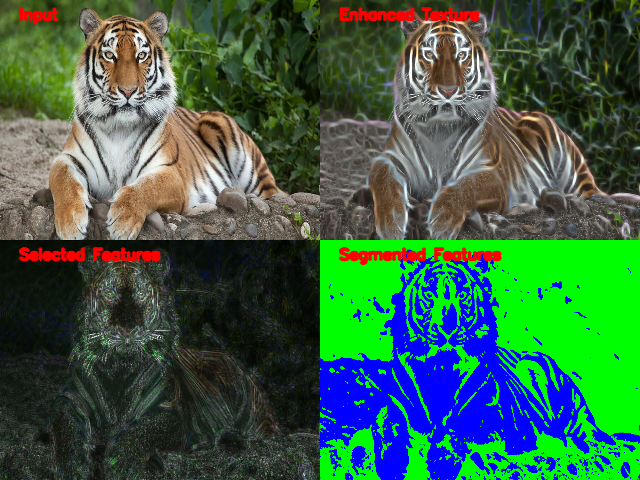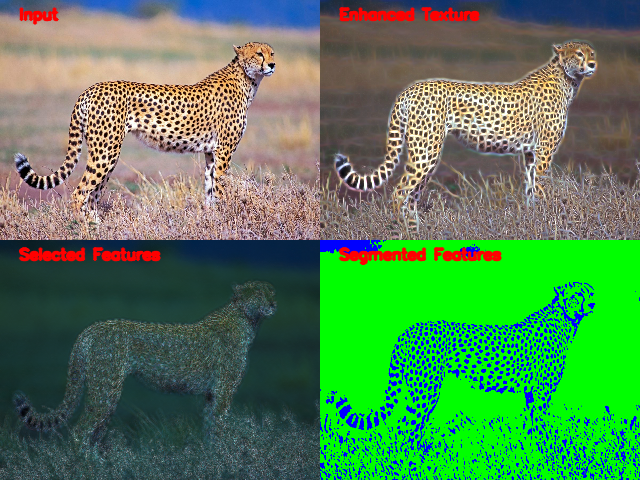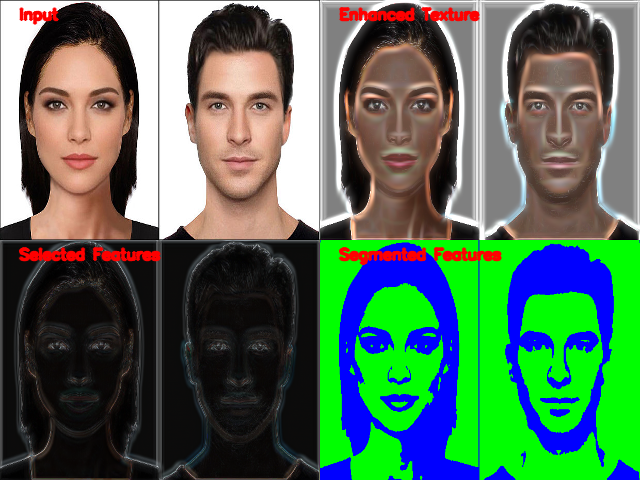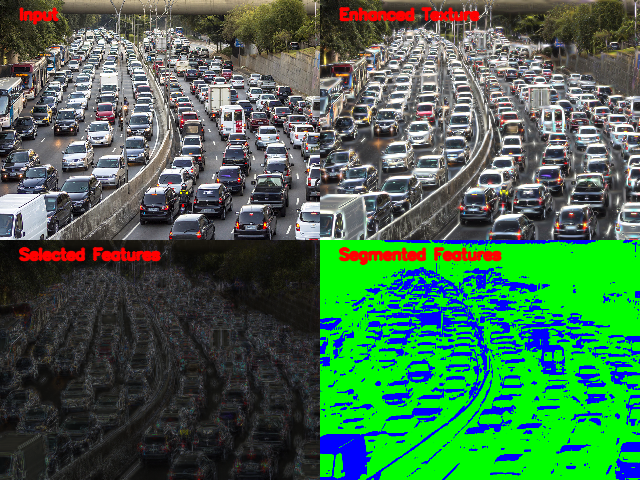This project includes implementation of a texture enhancer and feature segmenter using optimized multiscale Gabor filters. Below are the components:
- Gabor filter bank generation and Image Decomposition
- Texture Enhancer
- Optimal feature selection with PCA
- Feature Extraction and Binary Clustering
The filter bank consists of 40 (5 frequency and 8 orientation) 2D Gabor kernels. This initial filter bank is used for texture enhancement. Gabor filters at the core are basically band pass filters with guassian kernels modulated by a sinusoidal wave with desired frequency and orientation. Hence they are best suited for multiscale feature extraction. Below is the gabor filter in the spatial domain:
where f is the frequency of the sinusoidal wave, θ is the orientation, σ is the standard deviation of the gaussian kernel and ψ is the phase offset of the sinusoid wave. The maximum frequency of the bank is calculated as:
Here, the 40 filtered images obtained from image decomposition are merged into a single image using the max operator for each pixel. The 2 point norm can also be used for the merging of the pixels
PCA is applied on the matrix of 40 feature vectors to find the orthonormal basis representation for the bank. N principal components are then selected such that 99% of the covariance is preserved. This is done separately for each of the RGB components. In order to display the selected features, a euclidean norm is applied on each pixel to combine the N vectors onto a single image.
The N feature matrix is passed through a energy function for feature extraction. Here, a non-linear sigmoidal function is used given by:
This is followed by gaussian smoothing with σ equal to 4 times the gabor sigma used earlier. This filtered matrix is then normalized and passed to a k-means clustering algorithm with K=2 to separate the foreground features from the background. The blue pixels in the image are the foreground features and green is the background
This project is built on Python 3. It requires OpenCV support and was tested with OpenCV-4.1.1. Although, versions 3.4.1 and above should work fine
python3 src/main.py res/tiger.jpg
Below are the test results on a couple of random images. In the segmented image, blue represents the features and green represents background
Rodney Gracian Dsouza
- Weitao Li, KeZhi Mao, Hong Zhang, Tianyou Chai, "Designing Compact Gabor Filter Banks for Efficient Texture Feature Extraction"
- Anil K. Jain, Farshid Farrokhnia, "Unsupervised Texture Segmentation Using Gabor Filters"
These segmented gabor features can be fed to classifiers for object categorization/recognition which is future scope of work






